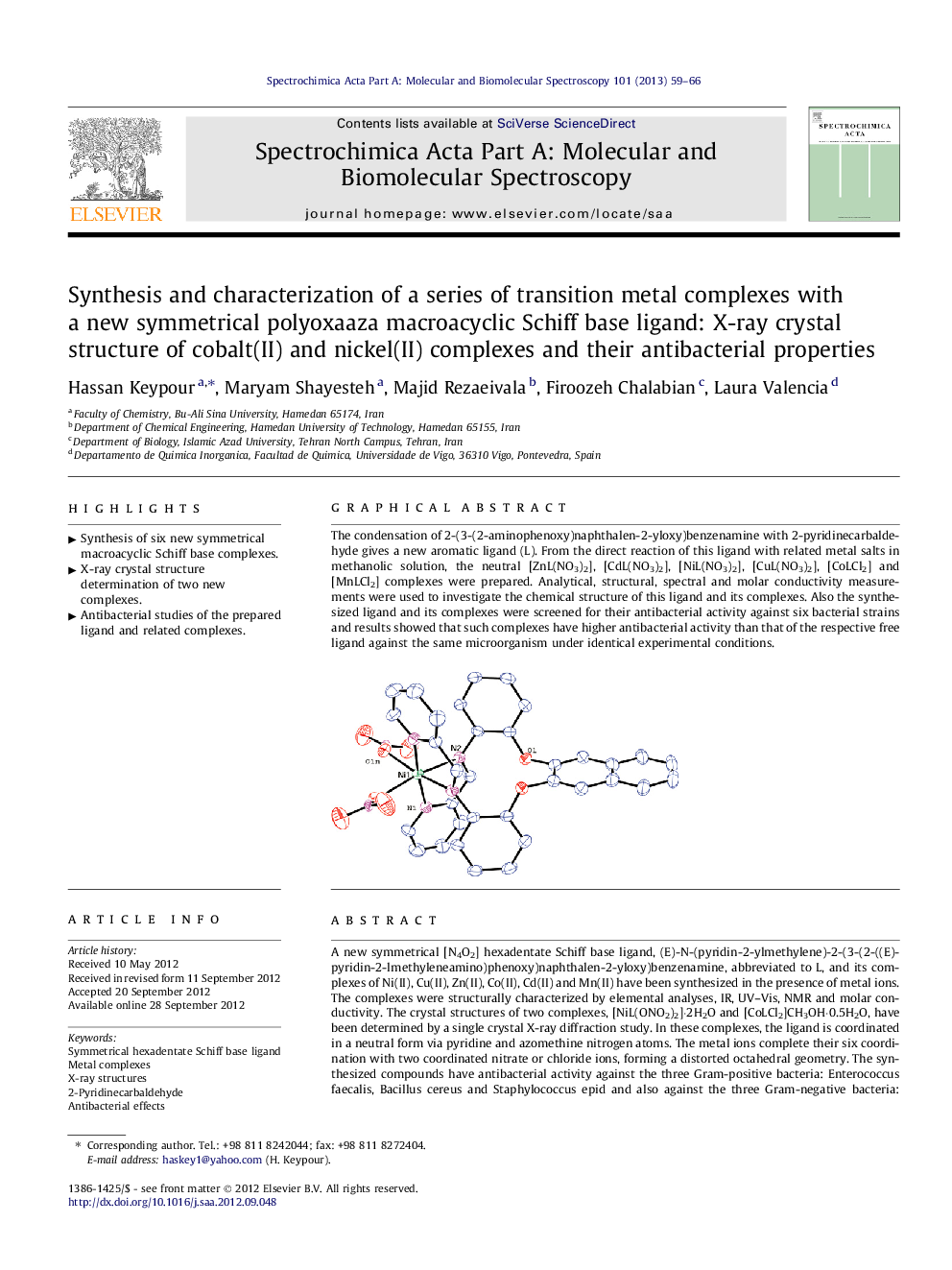| Article ID | Journal | Published Year | Pages | File Type |
|---|---|---|---|---|
| 1235033 | Spectrochimica Acta Part A: Molecular and Biomolecular Spectroscopy | 2013 | 8 Pages |
A new symmetrical [N4O2] hexadentate Schiff base ligand, (E)-N-(pyridin-2-ylmethylene)-2-(3-(2-((E)-pyridin-2-lmethyleneamino)phenoxy)naphthalen-2-yloxy)benzenamine, abbreviated to L, and its complexes of Ni(II), Cu(II), Zn(II), Co(II), Cd(II) and Mn(II) have been synthesized in the presence of metal ions. The complexes were structurally characterized by elemental analyses, IR, UV–Vis, NMR and molar conductivity. The crystal structures of two complexes, [NiL(ONO2)2]·2H2O and [CoLCl2]CH3OH·0.5H2O, have been determined by a single crystal X-ray diffraction study. In these complexes, the ligand is coordinated in a neutral form via pyridine and azomethine nitrogen atoms. The metal ions complete their six coordination with two coordinated nitrate or chloride ions, forming a distorted octahedral geometry. The synthesized compounds have antibacterial activity against the three Gram-positive bacteria: Enterococcus faecalis, Bacillus cereus and Staphylococcus epid and also against the three Gram-negative bacteria: Citrobacter freundii, Enterobacter aerogenes and Salmonella typhi. The activity data show that the complexes are more potent antibacterials than the parent Schiff base.
Graphical abstractThe condensation of 2-(3-(2-aminophenoxy)naphthalen-2-yloxy)benzenamine with 2-pyridinecarbaldehyde gives a new aromatic ligand (L). From the direct reaction of this ligand with related metal salts in methanolic solution, the neutral [ZnL(NO3)2], [CdL(NO3)2], [NiL(NO3)2], [CuL(NO3)2], [CoLCl2] and [MnLCl2] complexes were prepared. Analytical, structural, spectral and molar conductivity measurements were used to investigate the chemical structure of this ligand and its complexes. Also the synthesized ligand and its complexes were screened for their antibacterial activity against six bacterial strains and results showed that such complexes have higher antibacterial activity than that of the respective free ligand against the same microorganism under identical experimental conditions.Figure optionsDownload full-size imageDownload as PowerPoint slideHighlights► Synthesis of six new symmetrical macroacyclic Schiff base complexes. ► X-ray crystal structure determination of two new complexes. ► Antibacterial studies of the prepared ligand and related complexes.
